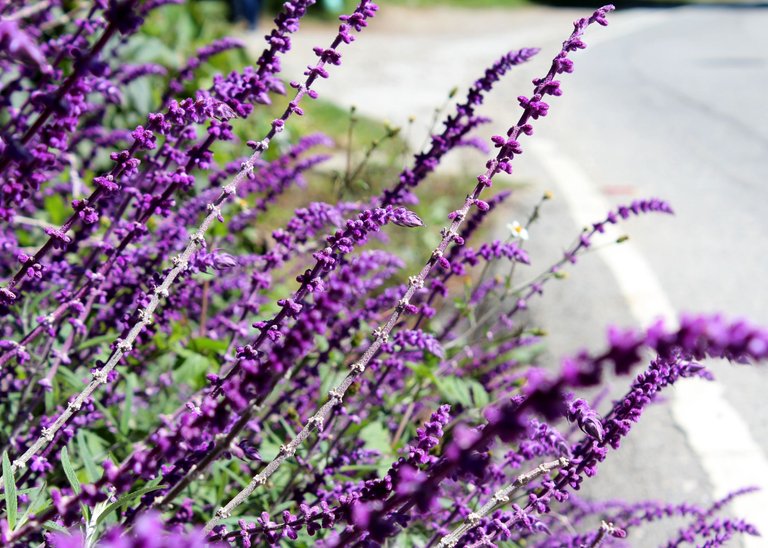Lavender is a shrub with violet or bluish flowers in the shape of spikes with a very characteristic and pleasant aroma ...
Properties of Lavender:
Lavender oil contains linalool, linalin, camphor, limonene, tannins and boreol, curamines and saponins. It is a medicinal plant that has diuretic, analgesic, antiseptic, relaxing, carminative, insecticide, cholagogue, healing, calming, antirheumatic, antibacterial, antiviral, stimulating blood circulation and skin regenerating effect.
What Lavender is for:
It is used to relax and relieve emotional and physical stress
It helps with blood circulation
Promotes the functioning of the nervous system
It is used to eliminate acne
Relieves pains thanks to its analgesic action
Improves throat conditions
Helps to heal wounds and disinfect them
Lavender helps to lower fever
It facilitates the elimination of accumulated gases
Combats nausea
Excellent remedy for rheumatism
Stimulates the formation of bile, which will help the digestion of fats
Relieves headache
The Lavender helps us to make digestions better
Reduces or eliminates muscle tension and muscle spasms
It is a natural remedy to combat insomnia
The Lavender is very useful for the recovery of blows, sprains, traumatisms, inflammations, etc.
Improves cases of asthma, cold and flu
Avoid hair loss by externally applying the infusion of lavender
It has tonic action on the liver and spleen
Use for stomach colic and gut swelling
It is a natural remedy for gout
Lavender is used to eliminate the fungus candida albicans and bacteria that cause vaginal infections
How to use Lavender:
We must collect it when the flowering period begins and dry it by making bunches that are not very dense and hanging upside down in a room that is ventilated, dark and cool, but that does not have humidity and that does not receive direct light. So we will leave them drying and we will be able to use the dry leaves throughout the year.
Make infusion of Lavender or Lavender with a teaspoon per cup of very hot water, letting it stand for 5 minutes covered and then the colamos. Drink slowly.
The infusion of lavender can be used to make mouth rinses and help eliminate bad breath or halitosis.
Have you had a hard day? Relax with a warm bath adding a couple of handfuls of lavender. Another option is to pour two tablespoons of lavender in a large container or tub and add hot water. We put our feet and we will also notice improvement.
ESPAÑOL:
La Lavanda es un arbusto con flores violetas o azuladas en forma de espigas con un aroma muy característico, agradable y muy medicinal...
Propiedades de la Lavanda:
El aceite de lavanda contiene linalol, linalino, alcanfor, limoneno, taninos y boreol, curaminas y saponinas. es una planta medicinal que posee efecto diurético, anlagésico, antiséptico, relajante, carminativo, insecticida, colagogo, cicatrizante, calmante, antirreumático, antibacteriano, antivírico, estimulante de la circulación sanguínea y regenerador de la piel.
Para qué sirve la Lavanda :
Se usa para relajar y aliviar el estrés emocional y físico
Mejora la circulación de la sangre
Favorece el funcionamiento del sistema nervioso
Se usa para eliminar el acné
Alivia los dolores gracias a su acción analgésica
Mejora las afecciones de la garganta
Ayuda a cicatrizar las heridas y desinfectarlas
La Lavanda ayuda a bajar la fiebre
Nos facilita la eliminación de los gases acumulados
Combate las náuseas
Estimula la formación de bilis, lo que ayudará a la digestión de las grasas
Alivia el dolor de cabeza
La lavanda nos ayuda a hacer mejor las digestiones
Reduce o elimina la tensión muscular y los espasmos musculares
Es un remedio natural para combatir el insomnio
La lavanda es muy útil para la recuperación de golpes, esguinces, traumatismos, inflamaciones, etc.
Mejora los casos de asma, resfriado y de gripe
Evita la caída del cabello aplicando externamente la infusión de lavanda
Tiene acción tónica sobre el hígado y el bazo
Úsala para cólico estomacal
La Lavanda se usa para eliminar el hongo candida albicans y bacterias que causan las infecciones vaginales..
Cómo usar la Lavanda:
Debemos recolectarla cuando empieza el periodo de floración y la secaremos haciendo manojos no muy tupidos que colgaremos boca abajo en una habitación que esté ventilada, oscura y fresca, pero que no tenga humedad y que no reciba luz directa. Así los dejaremos secando y podremos usar las hojas secas durante todo el año.
Hacer infusión de Lavanda con una cucharadita por taza de agua muy caliente, dejándola reposar 5 minutos tapada y luego la colamos. Bebe despacito.
La infusión de lavanda se puede usar para hacer enjuagues bucales y ayuda a eliminar el mal aliento o halitosis.
¿Has tenido un día duro? Relájate con un baño caliente añadiendo un par de puñados de lavanda. Otra opción es echar dos cucharadas de lavanda en un barreño o container grande y añadir agua caliente. Metemos los pies y también notaremos mejoría...

great article and nice picture